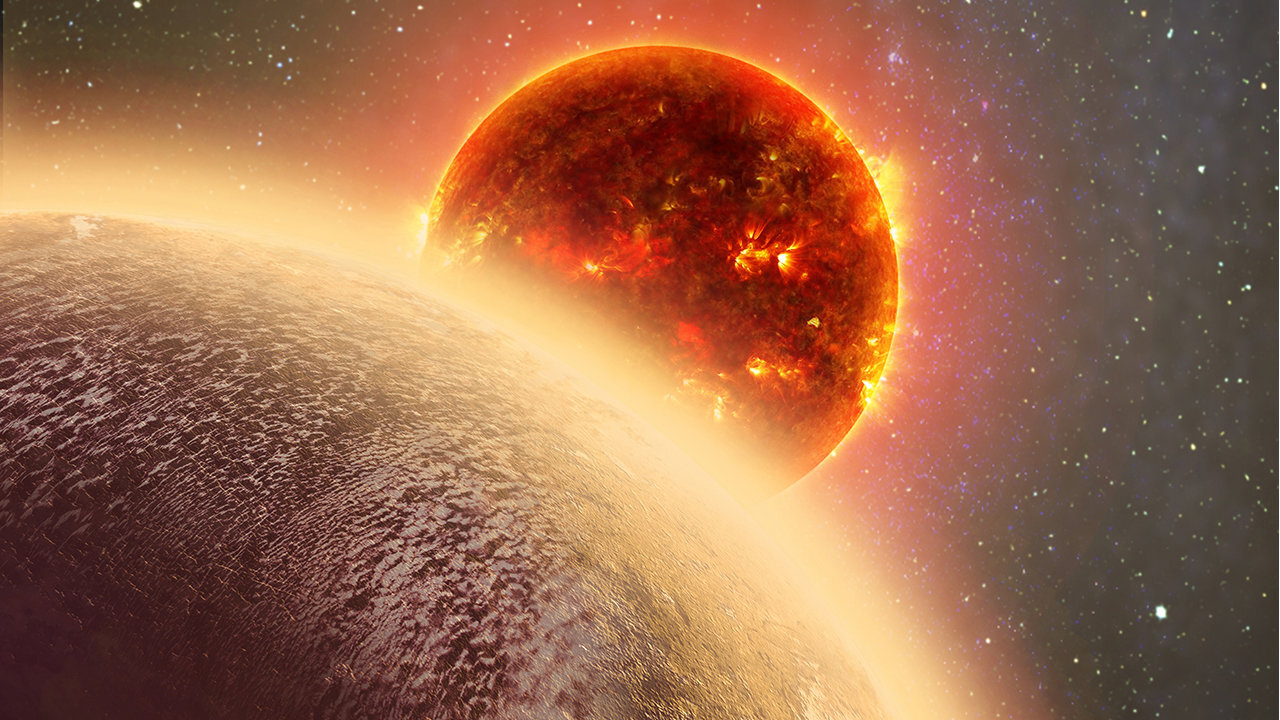Washington – NASA scientists have made a remarkable discovery that’s sparking global curiosity: a potentially habitable planet located between Earth and Venus in size and characteristics. This newly found world, named Gliese 12b, is situated just 40 light-years away and is now at the center of intense scientific investigation.
The discovery was made by two international teams of astronomers using NASA’s Transiting Exoplanet Survey Satellite (TESS), which tracks the slight dimming of stars to identify planets passing in front of them. These “transits” help astronomers detect and study distant exoplanets. Gliese 12b is now being described as the closest temperate, Earth-sized exoplanet ever found that transits its star — a milestone in the ongoing search for life beyond Earth.
What Makes Gliese 12b So Special?
Gliese 12b orbits a cool, red dwarf star named Gliese 12, situated in the constellation Pisces. This star is quite compact—measuring just 27% the size of our Sun—and much cooler, with a surface temperature approximately 60% lower than that of the Sun. These characteristics make it an ideal host for detecting Earth-sized planets like Gliese 12b. Gliese 12b completes one orbit around its star every 12.8 days, and if it has no atmosphere, its surface temperature is estimated at 42°C (107°F) — similar to a hot summer day on Earth.
Despite orbiting its star at just 7% of the distance between Earth and the Sun, Gliese 12b receives only about 1.6 times more stellar energy than Earth gets from the Sun. This relatively modest energy input suggests the planet could maintain moderate surface temperatures, making it a promising candidate in the search for potentially habitable environments.
Exo-Venus or Earth 2.0?
Masayuki Kuzuhara of Tokyo’s Astrobiology Center and Akihiko Fukui from the University of Tokyo describe Gliese 12b as an “exo-Venus” because it closely matches Venus in both size and the level of stellar radiation it receives. Yet, a crucial mystery remains unresolved: does the planet possess an atmosphere?
If an atmosphere is detected, it could mean that conditions may support liquid water and potentially life. If not, the planet might resemble a barren Venus-like world. To answer this question, scientists are turning to NASA’s James Webb Space Telescope, which could provide deeper insight into its atmospheric composition and surface conditions.
Why Red Dwarfs Are Ideal for Planet Hunting
Astronomers favor red dwarf stars for exoplanet detection because their small size and mass make the dimming effect during a transit more noticeable. Additionally, their lower luminosity brings the habitable zone — the region where liquid water can exist — much closer to the star, improving the chances of detecting Earth-like planets like Gliese 12b.
Gliese 12b orbits just 7% as far from its red dwarf star as Earth does from the Sun, yet it still lies within the star’s habitable—or “Goldilocks”—zone. This is the region where conditions may be just right for liquid water to exist on a planet’s surface, making it a prime target in the ongoing search for potentially life-supporting worlds.
However, scientists have not yet confirmed whether Gliese 12b has an atmosphere, a critical factor for habitability. Without this information, the planet’s potential to support life remains uncertain, though researchers remain cautiously optimistic as they prepare for further investigation.
Gliese 12b has a year as long as 12.8 days
Gliese 12b, discovered by NASA’s Transiting Exoplanet Survey Satellite (TESS), is estimated to be about 1.1 times wider than Earth, placing it in a similar size range as both Earth and Venus—the latter often called Earth’s “twin” due to their close similarities. The planet orbits its parent star, Gliese 12, at such a close distance that it completes a full orbit in just 12.8 Earth days, meaning a year on Gliese 12b is incredibly short. However, because Gliese 12 is a red dwarf star, only about one-quarter the size of our Sun, it emits much less heat, which allows the planet to remain within the star’s habitable zone despite its close orbit.
How scientist found Gliese 12b.
Scientists were able to detect Gliese 12b as it passed in front of, or “transited,” its parent red dwarf star—a method that creates subtle but measurable dips in the star’s brightness. These faint fluctuations are exactly what NASA’s Transiting Exoplanet Survey Satellite (TESS) is designed to identify with remarkable precision. According to Palethorpe, the research team began their observations without firm expectations regarding the planet’s characteristics, such as its size, mass, or orbital period. The discovery, therefore, unfolded piece by piece, with each transit providing crucial data that gradually revealed the planet’s profile and confirmed its existence.
“Discovering that it’s roughly the same size as Earth was a wonderful surprise,” he said. “Being able to observe it was exciting in itself, but what’s even more thrilling is that—when it comes to potential habitability—it might fall somewhere between Earth and Venus. That opens up fascinating possibilities.”
A Key Target for Studying Habitability
Shishir Dholakia, a doctoral researcher at the University of Southern Queensland and co-lead of one of the discovery teams, stated:“Gliese 12b is one of the most promising planets we currently have to study whether Earth-sized worlds around cooler stars can hold onto their atmospheres — a key factor in determining their potential to support life.”
Beyond its habitability potential, the discovery of Gliese 12b may also offer valuable insights into the evolutionary history of our own solar system, helping scientists understand how planetary environments form and change over time.By studying planets like Gliese 12b, scientists hope to uncover the mysteries of how planetary environments develop and whether life-friendly conditions can exist beyond Earth.
What Comes Next?
Although scientists have not yet found any evidence of life on Gliese 12b, the planet’s relative proximity to Earth and its potentially Earth-like traits place it high on the list of worlds warranting closer study. Researchers see it as a valuable natural laboratory for exploring conditions that may support habitability beyond our solar system. Upcoming observations, particularly from the James Webb Space Telescope, are expected to provide more detailed insights into its atmosphere, surface composition, and climate patterns. Each new piece of data could bring us a step closer to addressing one of humanity’s most profound and enduring questions: whether life exists elsewhere in the cosmos, or if we truly remain alone in the universe.

